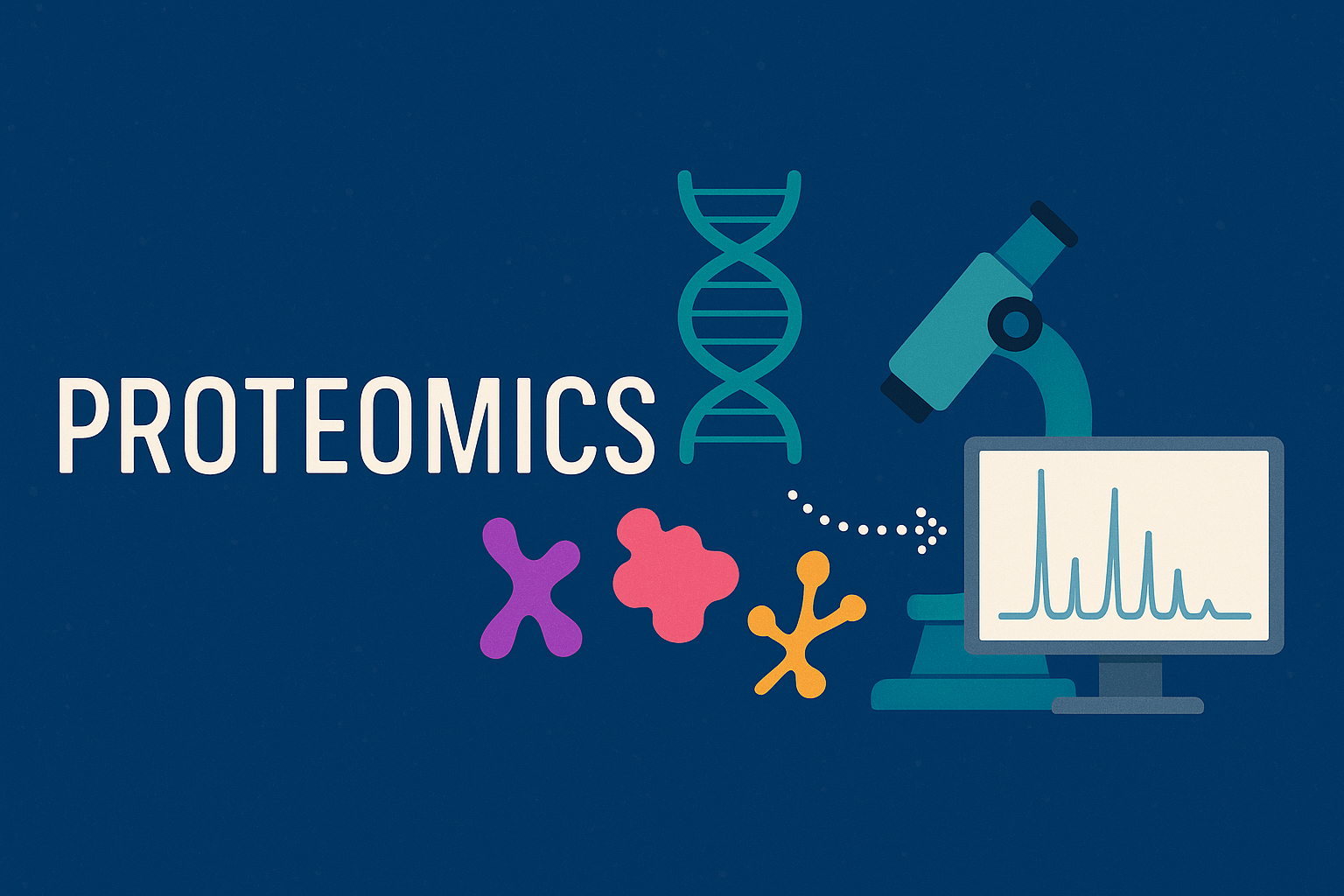Unlocking the power of proteomics in healthcare and drug discovery
Proteomics studies all proteins in the body, revealing how genes drive cellular functions. Unlike the stable genome, the dynamic proteome reflects real-time health and responses to diet, environment, and disease.

In our previous blog post, we discussed the often-overlooked yet critical stage of data preprocessing in life sciences. Today, we delve into proteomics—a field that holds immense promise for healthcare and drug discovery. By exploring what proteomics is, how we measure proteins, and the advantages and challenges of mass spectrometry in proteomics, we aim to highlight its transformative potential in modern medicine.
What is proteomics and why does it matter?
The human genome serves as the blueprint for who we are—dictating traits like hair color and predisposition to certain diseases. While genomics, the study of our genes, provides invaluable insights into our genetic makeup, it is the proteins that are the functional molecules in our cells and execute these genetic instructions, performing essential tasks that keep us alive and healthy.
Unlike the relatively stable genome, the proteome—the entire set of proteins produced by an organism—is highly dynamic and reflects the body’s current state, responding to external signals such as food intake or infection by pathogens. This makes proteomics especially valuable for understanding diseases and developing new treatments. Changes in protein levels can indicate disease presence, progression, and response to treatment, making proteins crucial biomarkers in clinical diagnostics. For example, measuring protein levels and enzyme function constitutes the largest category of prescribed clinical tests today [1]. Furthermore, modulating the functions of proteins with small molecules, antibodies, or other proteins is the most common strategy to treat and cure diseases.
Measuring proteins: techniques and technologies
Proteins can be measured using various techniques, each with its own strengths and limitations. Two primary methods include affinity-based approaches and mass spectrometry:
Affinity-based approaches employ molecules such as antibodies or aptamers that bind specifically to proteins. Once bound, the molecules are amplified and quantified using DNA sequencing, providing a measure of protein abundance.
Mass spectrometry (MS) has been a cornerstone of proteomics for about 30 years. It works by ionizing protein fragments (peptides) and measuring their mass-to-charge ratios. This data is then used to identify and quantify the proteins present in a sample. MS-proteomics can detect a broad range of proteins and modifications, making it a powerful tool for discovery-based research.
Advantages and challenges of mass spectrometry
Advantages of mass spectrometry:
- Untargeted analysis of proteomes: MS can analyze thousands of proteins in a single experiment, providing comprehensive insights into the proteome. Unlike affinity-based approaches, MS analysis is usually unbiased and can detect proteins outside of those targeted by specific antibodies/aptamers.
- Sequencing and modification detection: MS detects proteins at amino-acid residue level, including potential mutations or genetic variations, as well as post-translational modifications (e.g., phosphorylation, methylation, glycosylation). These changes to proteins are critical for understanding protein function and regulation. The high-resolution view of proteomes by MS works in contrast to the affinity-based approaches, which only measure levels of specific proteins.
- Versatility: MS is a quantitative analytical approach that can be utilized to learn a lot more about proteins, from studying their interactions with other proteins (using affinity-purification mass spectrometry) or small molecules (chemoproteomics) to learning about their 3D structures and dynamics using chemical crosslinking and chemical footprinting.
Challenges of Mass Spectrometry:
- Detection limits: MS struggles with detecting low-abundance proteins due to its sensitivity limitations in high-throughput modes. However, targeted MS-proteomics can overcome this by focusing on specific proteins of interest.
- Throughput limitations: Typical data acquisition time in MS ranges from 30-60 minutes per sample, making it less attractive for large-scale sample analyses. However, new instruments (e.g. Thermo Astral) with sub-10-minute acquisition times are becoming competitive with affinity-based approaches.
- Complex data analysis: The vast amount of data generated by MS requires significant computational power and sophisticated algorithms for accurate interpretation. Traditional algorithms typically fail to identify and discard up to 75% of spectra, limiting the success of downstream analyses.
Typical MS software is designed to run on single workstations, powered by fairly simple algorithms that need to process massive amounts of data in practical amounts of time. However, all of the aforementioned challenges could benefit tremendously from better algorithms, especially by using the latest AI/ML approaches and innovations in cloud computing. In the next blog posts, we will share our plans and solutions to mitigate these issues and discuss how better tools could lead to more accurate, comprehensive, and faster identification of proteins and their modifications. This will facilitate precision medicine, biomarker discovery, and drug development. Stay tuned!
Resources
Explore publications, case studies, and guides to power your next experiment.




.png)

.png)
.svg)